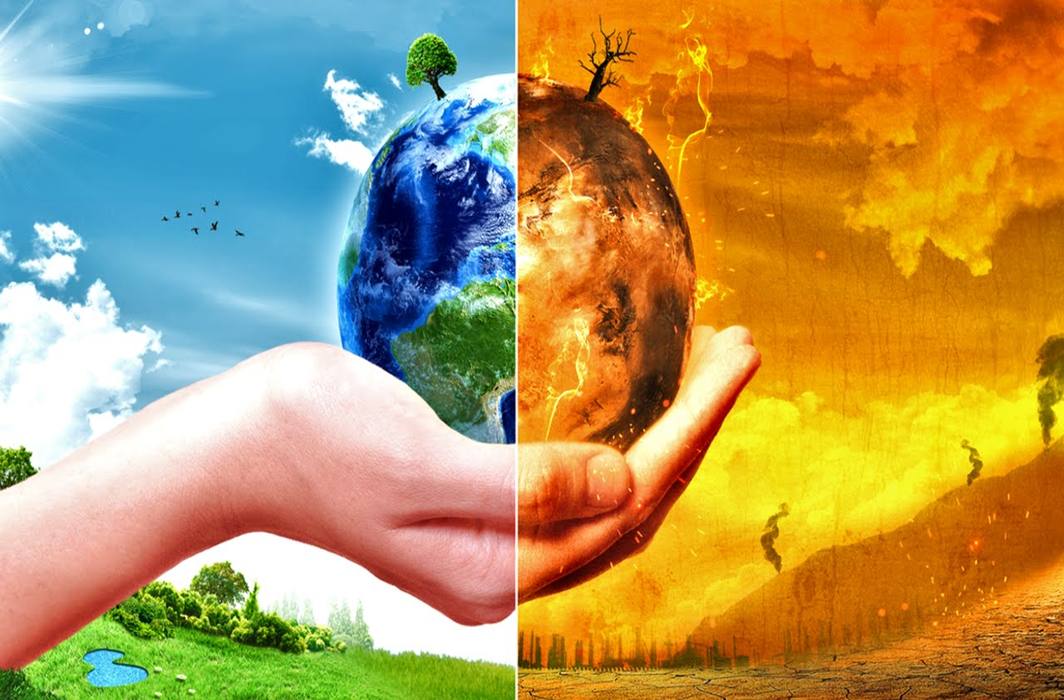Gadgets
Massive Reserve of Mercury Trapped in Permafrost, Warming Set To Release It

It’s a ticking time bomb, set to go off with global warming: trapped in the permafrost of Northern Hemisphere lies more than twice the amount of mercury in the rest of the earth.
A warming climate could release large amounts of this dangerous toxin that has serious health effects in humans and animals, ranging from neurological problems, damage to various organs to birth defects.
Scientists warn that rising air temperatures due to climate change could defrost the existing permafrost layer and this could release a large quantity of mercury that could potentially affect ecosystems around the globe, phys.org reported.
The findings, published in Geophysical Research Letters, found 793,000 tonnes of mercury in frozen permafrost soils and another 863,000 tonnes in unfrozen soils in the northern permafrost region. Combined, this is equivalent to 122,000 litres of liquid mercury – an amount that is about 10 times the total industrial mercury emissions in the last 30 years or so and makes it the largest reservoir of mercury on the planet. Currently, humans emit about 2,000 tonnes of mercury every year through industrial activity, said Down To Earth.
‘Permafrost’ is defined as any soil that has been frozen for more than two years. In the Northern Hemisphere, permafrost accounts for about 8.8 million square miles (22.79 million square kilometers) of land — or roughly 24 percent of exposed Earth, according to the National Snow and Ice Data Center, said LiveScience.
Over time, naturally occurring compounds in the atmosphere, such as mercury and carbon dioxide, can bind with organic material in the soil and be frozen into permafrost, potentially remaining trapped underground for thousands of years before it thaws, said the new study.
Researchers also point to the fact that this large amount of mercury might pose a danger to the environment. Mercury has negative reproductive and neurological effects on animals and is known to accumulate in both water and terrestrial food chains.
“There would be no environmental problem if everything remained frozen, but we know the Earth is getting warmer,” study author Paul Schuster, a hydrologist at the U.S. Geological Survey in Boulder, Colorado, said in a statement. “This discovery is a game-changer.”
Researchers have already observed climate-change-induced permafrost thawing, and there is likely more on the way: According to a 2013 study, the Northern Hemisphere will lose anywhere from 30 to 99 percent of its permafrost by 2100, assuming current human greenhouse-gas emissions continue unabated.
Previous studies have attempted to account for the billions of tons of carbon dioxide, methane and even “zombie pathogens” that could be loosed into the air and the oceans by melting permafrost. The environmental impact of a large-scale mercury leak, however, remains an unpredictable problem.
One major concern is that this trapped mercury could seep into nearby waterways and transform into methylmercury, a toxin that can cause motor impairment and birth defects in animals, Edda Mutter, science director for the Yukon River Inter-Tribal Watershed Council, said in a statement, according to media reports. Such contamination could travel swiftly up the food chain from microorganisms to humans, said Mutter, who was not involved in the new study.
The researchers are currently working on a follow-up study modeling the release of permafrost due to climate change, according to the statement.
MERCURY POISONING (Excerpted from LiveScience)
When mercury is released into the atmosphere, it is dissolves in fresh water and seawater.
Mercury in humans may cause a wide range of conditions including neurological and chromosomal problems and birth defects.
A type of mercury called methylmercury is most easily accumulated in the body is and is particularly dangerous.
About 80 to 90 percent of organic mercury in a human body comes from eating fish and shellfish, and 75 to 90 percent of organic mercury existing in fish and shellfish is methylmercury, according to a paper published by the Journal of Preventative Medicine and Public Health. (See below for mercury levels in types of fish)
Health effects
Mercury poisoning is a slow process that can take months or years, according to the National Institutes of Health (NIH). Since the process is so slow, most people don’t realize they are being poisoned right away. Mercury from food sources is absorbed into the bloodstream through the intestinal wall, and then carried throughout the body.
The kidneys, which filter the blood, can accumulate mercury over time. Other organs can also be affected.
Negative health effects from methylmercury may include neurological and chromosomal problems. According to the NIH, long-term exposure to organic mercury can cause:
uncontrollable shaking or tremor
numbness or pain in certain parts of the skin
blindness and double vision
inability to walk well
memory problems
seizures
death with large exposures
Most notable are the effects of mercury on the brain.
Mercury poisoning can result in hearing and vision changes, personality changes, memory problems, seizures or paralysis.
When children are exposed to mercury, they may have developmental or muscle coordination problems.
The toxicity of methylmercury may also have reproductive consequences.
Pregnant woman who eat fish and seafood contaminated with methylmercury may have the increased risk of having a miscarriage, or having a baby with deformities or severe nervous system diseases. These birth defects can happen even if the mother doesn’t seem to be poisoned.
Symptoms of mercury poisoning (Excerpted from Scientific American)
There are NO specific symptoms and it can be confused for something else.
Unfortunately in mercury, symptoms can look like many disease states. When levels are building up, there could be a variety of symptoms that a physician may interpret as another illness.
Only when the physician can’t find a real cause or gets a toxicologist involved will they do blood tests and say, “Yes, this is probably due to mercury exposure.”
It’s a difficult diagnosis. You have to know by history that a person has been exposed to this and put two and two together. No specific set of symptoms will say, “Ah, this is mercury poisoning.”
If it’s mercuric salts the person has been poisoned by, it may just be a problem with the kidneys, issues with the ability to urinate, or they’re feeling out of whack because of renal dysfunction.
If someone is inhaling fumes from elemental mercury, that can show up as an upper respiratory illness, like a flu, at first. They might find they can’t concentrate well, have trouble with fine motor control or their perception of smell, eyes or touch. If it was affecting their heart, it could be palpitations or just in general not feeling well. If something is not going well with their blood cells forming, they may have issues similar to anemia, feeling very tired, easy bleeding or bruising.
With organic mercury exposure, the symptoms are pretty much the same, but probably not respiratory. The nervous system effects are what someone would see first.
Fish low in mercury
Anchovies (Nethili in Malayalam), Butterfish (Pomfret), Catfish (Singhara), Clam, Crab, Herring (Hilsa), Mackerel (bangada), Oyster, Salmon (Indian salmon is rawas), Sardine, Scallop, Shrimp, Sole, Squid, Tilapia, Trout, Whitefish
Moderate mercury (Eat six servings or fewer per month; pregnant women and small children should avoid these)
Bass, Carp (Rohu), Cod (Gobro), Lobster, Snapper, Tuna (Canned Chunk light)
High mercury (Eat three servings or less per month; pregnant women and small children should avoid)
Bluefish, Grouper (Kalava in Malayali), Sea Bass (Asian seabass is bhekti), Tuna (Canned Albacore, Yellowfin),
Highest mercury (avoid eating)
Shark, Swordfish, Tuna (Ahi)
Gadgets
WhatsApp to introduce Native File Sharing feature similar to Apple’s AirDrop
Users can choose to be visible to others without disclosing their phone numbers to people who are not their contacts.

A Meta-owned messaging platform, WhatsApp is all set to introduce a new feature that allows Android users to share files with another user nearby. According to reports, the feature will be developed similar to Apple’s AirDrop.
The file sharing feature nearby is not currently available for beta testers. However, according to a report from WhatsApp feature tracker WABetaInfo, it seems that the feature will soon be introduced. The report reveals a screenshot that shows an option within the app stating, to share files with people nearby, along with a list of nearby users.
It is interesting to note that users can choose to be visible to others without disclosing their phone numbers to people who are not their contacts. In order to share files with other users, one needs to wait for nearby users to accept their request. The process involves a unique interaction, where nearby users can shake their device to receive incoming share requests. It is important to note that this feature is designed with end-to-end encryption to ensure user privacy.
In the upcoming update, WhatsApp is expected to introduce a nearby file-sharing feature. However, the current beta version for Android, which is 2.24.2.20, has addressed a camera issue. Some Android beta testers have reported difficulties in launching the camera within the app after the 2.24.2.13 update. Upon launching, users were presented with an error message that said, can’t start camera, please restart your device. This issue persisted even after restarting the device or relaunching the app.
The latest beta update of WhatsApp, located at 2.24.2.20, has fixed the camera bug. This allows users to launch the camera within the app and share photos and videos with their contacts without any interruptions. As WhatsApp continues its efforts to improve its features and address bugs, users can expect a better messaging experience on the platform.
Gadgets
Meesho mega blockbuster sale: E-commerce platform to offer 80 percent discount on electronics
The e-commerce platform’s first mega blockbuster sale will sell more than 400 brands directly with the help of authorised partners on its digital store called Meesho Mall.

Ahead of the festive season, e-commerce platform Meesho’s mega blockbuster sale is starting on Friday, October 6, 2023. The platform will provide a massive discount of up to 80 percent on different categories such as essentials, accessories, electronics, footwear, etc.
The blockbuster sale is scheduled to conclude on October 13, 2023. Notably, the Softbank backed e-commerce platform is starting its festive sale a day before Flipkart or Amazon’s festive sale goes live. The e-commerce platform’s first mega blockbuster sale will sell more than 400 brands directly with the help of authorised partners on its digital store called Meesho Mall.
Reportedly, the platform also added over 50 lakh new customers during these sales. More than 75 percent of the demand was received from Tier-II cities, including Amravati, Aurangabad, Dehradun, Nellore, Solapur, and Warangal. The platform further claimed that they have added more than 2 lakh sellers in the past two years.
Recently, Meesho affirmed that they have received over 10 million (approx) from its pre-festive sales during Onam, Raksha Bandhan, and Ganesh Chaturthi. The platform has more than 14 lakh sellers, selling approx 12 crore products in 30 different categories.
In an effort to increase the seller base, the company announced the onboarding of non-GST sellers on the platform earlier this week. The GST council announced to permit the e-commerce platform to onboard sellers with turnover of up to Rs 40 lakh.
Prior to Meesho’s Mega Blockbuster Sale, the company introduced a loyalty programme during which eligible users will earn Smart Coins, which the user can redeem every time they make the purchase of any products on the platform.
As per Redseer, over 140 million shoppers are likely to make purchases during the festive season. This will enhance the Gross Merchandise Value (GMV) of the Indian e-commerce sector by 18 to 20 per cent and may touch Rs 90,000 crore as compared to Rs 76,000 crore last year.
Phones & gadgets
Apple launches iPhone 15 series, India price, features, availability
The iPhone 15 series will be available in India from September 22 but iPhone lovers can also pre-order, starting from September 15 onwards.

Apple launched its most anticipated iPhone 15 series, including the iPhone 15, iPhone 15 Plus, iPhone 15 Pro and iPhone 15 Pro Max during the Wonderlust event globally on September 12 night.
The iPhone 15 series will be available in India from September 22 but iPhone lovers can also pre-order, starting from September 15 onwards.
People can buy a new iPhone 15 or upgrade it to the old one. There are five colours available for the people.
According to reports, Apple has been manufacturing the iPhone 15 series in India and China. Apple has moved 7% of its iPhone production to India. Previously, India was not making the newest models. The Centre’s production-linked incentive (PLI) scheme for smartphones played a part in Apple moving its production to India.
The new iPhone 15 has been launched with the same starting price as its prototype, the iPhone 14. The 128GB variant is priced at Rs 79,900, while the 256GB variant costs Rs 89,900. For people who need more storage, the 512GB variant is available for Rs 1,09,900.
This latest iPhone series puffs a 6.1-inch display and comes in five different colours which are pink, yellow, green, blue, and black. While the design remains the same as the previous models, the iPhone 15 features a dynamic island notch instead of the usual notch, which was highly popular among the iPhone 14 Pro phones.
The camera part of the iPhone series has undergone significant upgrades, the new iPhone 15, with an enhanced 48-megapixel primary sensor replaces the 12-megapixel dual camera system which was available in the previous iPhone 14. This significant improvement promises better low-light photography and portrait shots.
The tech giant announced that the iPhone 15 has an all-day battery life, making it more convenient for users to go about their daily activities without worrying about their phone’s battery.
The iPhone 15 Pro models feature a lighter body and thinner bezels. The new AirPods Pro with USB-C charging case will support Lossless Audio with Apple Vision Pro.
Additionally, the iPhone 15 is powered by Apple’s A16 bionic processor, an upgrade from the A15 bionic chipset used in the previous iPhone 14 and iPhone 14 Plus models. The Pro models had the faster and better A16 chip, but now this feature is available in all iPhone 15 models.
The USB-C port on the standard iPhone 15 and iPhone 15 Plus remain limited to lightning speeds up to 480 Mbps. The iPhone 15 Pro and iPhone 15 Pro Max support USB 3 speeds up to 10 Gbps. People will need to buy a separate 1-meter Thunderbolt 4 Pro cable for Rs 5,724 or Rs 10,701 for the 1.8-meter cable to support faster speeds.
The dynamic island notch feature, which can adjust its size according to notifications, was widely discussed before the launch of the iPhone 15. This unique feature can now be available in all models of the phone.
Another important feature of the iPhone 15 is the shift to the USB Type C charging port. Apple has abandoned the lightning port in favour of the more commonly used USB Type C charging port. This means, there is no longer a need for a special iPhone charging cable to be carried around everywhere you go.
-

 Entertainment11 hours ago
Entertainment11 hours agoBollywood stars Vidya Balan, Kartik Aaryan, Pratik Gandhi, Ileana D’Cruz, Mouni Roy, Radhika Madan, Mrunal Thakur attend Do Aur Do Pyaar premiere
-

 LATEST SPORTS NEWS15 hours ago
LATEST SPORTS NEWS15 hours agoIPL 2024: Delhi Capitals thrash Gujarat Titans by 6 wickets
-

 Cricket news9 hours ago
Cricket news9 hours agoHappy Birthday KL Rahul: Suniel Shetty wishes son-in-law KL Rahul on his 32nd birthday
-

 India News13 hours ago
India News13 hours agoReligious outfit vandalises The Blessed Mother Teresa High School in Telangana after teachers object to students wearing Hanuman Deeksha dress
-

 India News14 hours ago
India News14 hours agoClashes erupt during Ram Navami procession in West Bengal’s Murshidabad district
-

 India News8 hours ago
India News8 hours agoEnforcement Directorate seizes Shilpa Shetty’s husband Raj Kundra’s properties worth Rs 97 crore
-

 India News7 hours ago
India News7 hours agoEnforcement Directorate says Arvind Kejriwal is deliberately eating mangoes, sweets, taking sugar with tea to increase his blood sugar level and create ground for bail









